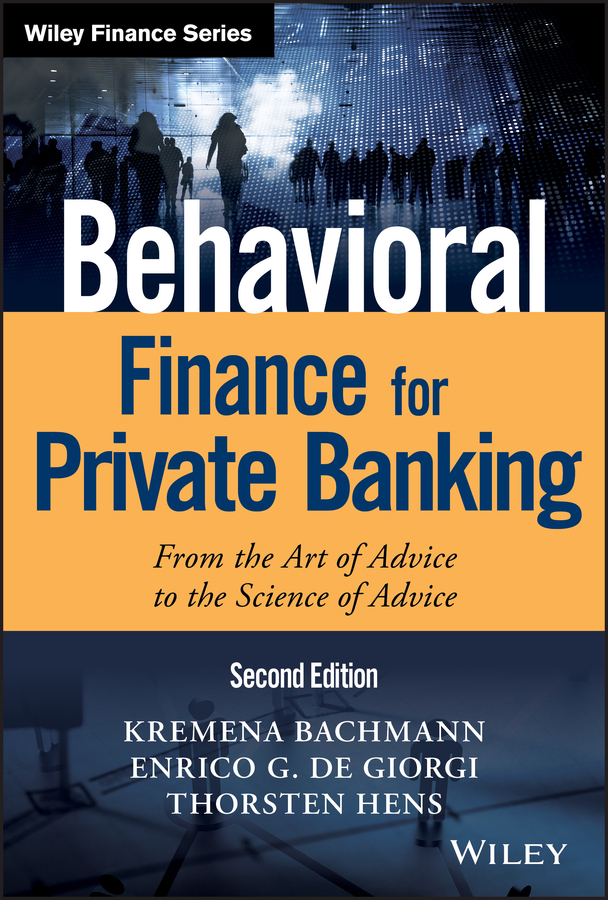Table of Contents
List of Tables
- Chapter 2
- Chapter 3
- Chapter 4
- Chapter 6
- Chapter 7
- Chapter 8
- Chapter 10
- Chapter 11
- Chapter 13
List of Illustrations
- Chapter 2
- Chapter 3
- Chapter 4
- Chapter 5
- Chapter 6
- Chapter 7
- Chapter 8
- Chapter 9
- Chapter 10
- Chapter 11
- Chapter 13
- Chapter 15
Guide
Pages
Founded in 1807, John Wiley & Sons is the oldest independent publishing company in the United States. With offices in North America, Europe, Australia, and Asia, Wiley is globally committed to developing and marketing print and electronic products and services for our customers' professional and personal knowledge and understanding.
The Wiley Finance series contains books written specifically for finance and investment professionals as well as sophisticated individual investors and their financial advisors. Book topics range from portfolio management to ecommerce, risk management, financial engineering, valuation and financial instrument analysis, as well as much more.
For a list of available titles, visit our website at www.WileyFinance.com.
Behavioral Finance for Private Banking
From the Art of Advice to the Science of Advice
Second Edition
KREMENA BACHMANN
ENRICO G. DE GIORGI
THORSTEN HENS
Copyright 2018 by John Wiley & Sons, Inc. All rights reserved.
Published by John Wiley & Sons, Inc, Hoboken, New Jersey.
Published simultaneously in Canada.
No part of this publication may be reproduced, stored in a retrieval system, or transmitted, in any form or by any means, electronic, mechanical, photocopying, recording or otherwise, except as permitted under Section 107 or 108 of the 1976 United States Copyright Act, without either the prior permission of the Publisher, or authorization through payment of the appropriate percopy fee to the Copyright Clearance Center, Inc, 222 Rosewood Drive, Danvers, MA 01923, (978) 7508400, fax (978) 6468600, or on the Web at www.copyright.com. Requests to the Publisher for permission should be addressed to the Permissions Department, John Wiley & Sons, Inc, 111 River Street, Hoboken NJ07030, (201) 7486011, fax (201) 7486008, or online at www.wiley.com/go/permissions.
Limit of Liability/Disclaimer of Warranty: While the publisher and author have used their best efforts in preparing this book, they make no representations or warranties with respect to the accuracy or completeness of the contents of this book and specifically disclaim any implied warranties of merchantability or fitness for a particular purpose. No warranty may be created or extended by sales representatives or written sales materials. The advice and strategies contained herein may not be suitable for your situation. You should consult with a professional where appropriate. Neither the publisher nor author shall be liable for any loss of profit or any other commercial damages, including but not limited to special, incidental, consequential, or other damages.
For general information on our other products and services or for technical support, please contact our Customer Care Department within the United States at (800) 7622974; outside the United States at (317) 5723993, or fax (317) 5724002.
Wiley publishes in a variety of print and electronic formats and by printondemand. Some material included with standard print versions of this book may not be included in ebooks or in printondemand. If this book refers to media such as a CD or DVD that is not included in the version you purchased, you may download this material at http://booksupport.wiley.com. For more information about Wiley products, visit www.wiley.com.
Library of Congress CataloginginPublication Data is Available
ISBN 9781119453703 (cloth)
ISBN 9781119453734 (ePDF)
ISBN 9781119453710 (ePub)
Cover Design: Wiley
Cover Image: Nomad_Soul/Shutterstock; Menna/Shutterstock; crystal51/Shutterstock; Peshkova/Shutterstock
CHAPTER 1
Introduction
Behavioral finance is an interdisciplinary research area that combines insights from psychology with finance to better understand investors' behavior and asset prices. It has managed to bridge the gap between theory and practice. Moreover, the psychological research that behavioral finance is based on recently got a foundation in biological differences found in the brain.
Traditional finance has focused on the ideal scenario of thoroughly rational investors in efficient markets. According to this standard paradigm in finance, individuals rationally search for information and know all available actions that serve their preferences. The latter are stable over time and robust to the occurrence of unanticipated events. As a result, rational investors searching for superior returns detect and eliminate any predictability in the asset pricesthe market is efficient. According to traditional finance, the market remains efficient even if some investors behave irrationally. Indeed, rational investors will detect any mispricing generated by irrational investors and exploit it with the use of arbitrage strategies, which are assumed to be unlimited. Consequently, any mispricing will very quickly be corrected, irrational investors will be driven out of the market, and the market will again quickly become efficient. A statistical consequence of prices being unpredictable is that returns are (log)normally distributedwhich is the content of the central limit theorema cornerstone of statistics. Consequently, optimal decisions can be taken based on the two parameters of a normal distribution: the mean and the variance. Thus, the meanvariance optimization and the efficient markets hypothesis are logical consequences of the rationality assumption.
In practice, however, we observe that even professional investors behave irrationally. Moreover, there is empirical evidence that the use of arbitrage strategies to exploit observed mispricing is limited (e.g., implementing an arbitrage strategy could be expensive and typically not at zero risk). The consequence of irrational investors and limited arbitrage is inefficient markets. As we will discuss in detail, investors are not always able to make rational decisions so that market prices show anomalies. For example, investors tend to adopt the behavior of other investors, and this herding behavior causes shortterm predictability that leads ultimately to market crashes. Consequently, asset returns are no longer normally distributed. For example, they have fat tails (i.e., too many very bad returns)which Taleb (2007) called black swans. Moreover, in inefficient markets, the meanvariance optimization is no longer rational. Thus, ignoring the insights from behavioral finance can be costly for investors adhering to traditional finance.
Behavioral finance emerged when Nobel laureate Daniel Kahneman and his colleague Amos Tversky conducted psychological research to question the assumptions of rationalitya cornerstone of the classical decision theory. Kahneman & Tversky (1979) developed a new theory, which they called prospect theory. Prospect theory has two phases: an editing phase and an evaluation phase. In the first phase, Kahneman and Tversky show how choice alternatives are mentally coded and transformed to be evaluated in the second phase. The editing phase has developed into a rich knowledge of behavioral biasesthe topic of the next section. In the evaluation phase, Kahneman and Tversky develop a new decision model, which is the main content of our section on decision theory. The knowledge of behavioral biases is very valuable for a better understanding of clients in wealth management. Prospect theory also offers a risk measure that is consistent with the client's experience. With this measure one can construct asset allocations that better suit the clients than the asset allocations based on the volatility used in traditional finance. Prospect theory states that investors dislike losses more than volatility. In fact, investors react more to losses than they react to gains. Unlike volatility, the psychological risk measure is not the same for all investors, but is a characteristic of the individual. For this reason and others, the advantages of having a quality risk profiling procedure are numerous.


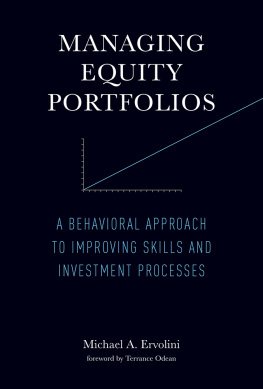

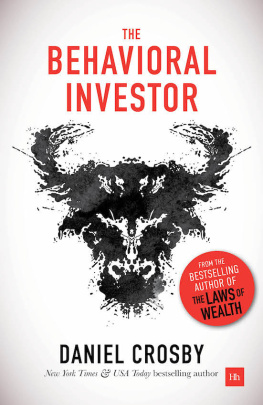
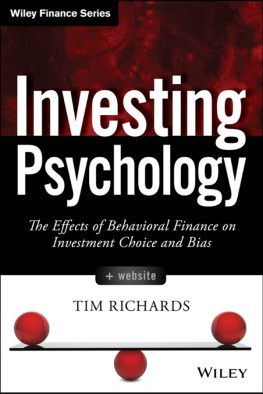
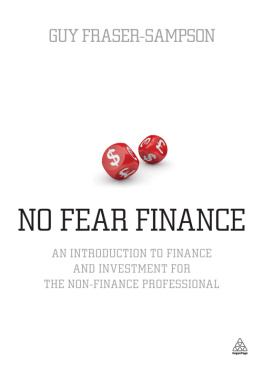
![Daniel Crosby [Daniel Crosby] - The Laws of Wealth: Psychology and the secret to investing success](/uploads/posts/book/124058/thumbs/daniel-crosby-daniel-crosby-the-laws-of-wealth.jpg)


